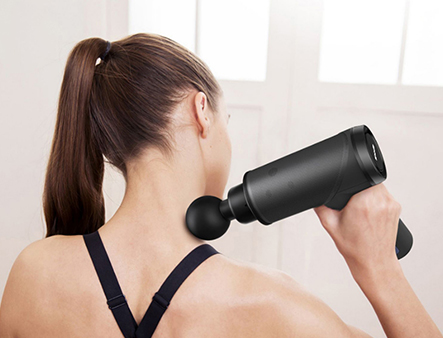Introduction to the Application of CW32 in Fascia Gun
The application of BLDC motors has continued to be popular in recent years, such as drones, electric tools, and internet celebrity wind turbines in previous years, with shipments reaching tens of millions. Especially the fascia gun, it can be said to have become a popular "internet celebrity artifact" in the past two years.


Fascia gun, also known as deep myofascial impactor, is a soft tissue rehabilitation tool that relaxes the body's soft tissues through high-frequency impact. The fascia gun can be understood as a civilian version of the DMS (Electric Deep Muscle Stimulator), and the vibration frequency may vary during use, with a basic function similar to DMS.
The fascia gun uses its specially designed high-speed motor to drive the "gun head", generating high-frequency vibrations that act on the deep layers of muscles, reducing local tissue tension, alleviating pain, and promoting blood circulation.
Driven by market prospects, the number of enterprises entering the fascia gun industry layout is constantly increasing. However, fascia gun products are related to human health and have high quality requirements. To ensure the quality of fascia gun products, MCU chips are a very important part.
Product features of fascia gun:
√ High power DC brushless motor, high-frequency vibration (2000-3200 times/min);
√ The vibration amplitude is approximately 10-16mm, and the frequency is approximately 30-50Hz;
√ Ultra strong power output, with a stroke of up to 10mm;
√ Can output an instantaneous strike force of 130N;
The deep technology of products such as fascia guns is mainly based on a basic application of microcontroller brushless motor control. As the core component of electronic products, MCU chips play the most crucial role in achieving the entire control function of fascia gun products.
Application Block Diagram of CW32F030 in Fascia Gun


CW32F030 chip features:
√ 32-bit microcontroller with high-performance ARM Cortex-M0+as the core
√ Maximum main frequency 64MHz
√ 16 bit advanced control timer, supporting 6 capture/compare channels and 3 complementary PWM outputs, dead time, and flexible synchronization function
√ 12 bit ADC
√ Five channel DMA controller
-
Service hotline
全国咨询电话:
18002584030(WeChat)
商务合作:
Ms. Hu:13689515916(WeChat) janney@icchain.com
-
WeChat

-
Sample Application




 鄂公网安备 42018502005668号 | 鄂ICP备2022001247号
鄂公网安备 42018502005668号 | 鄂ICP备2022001247号